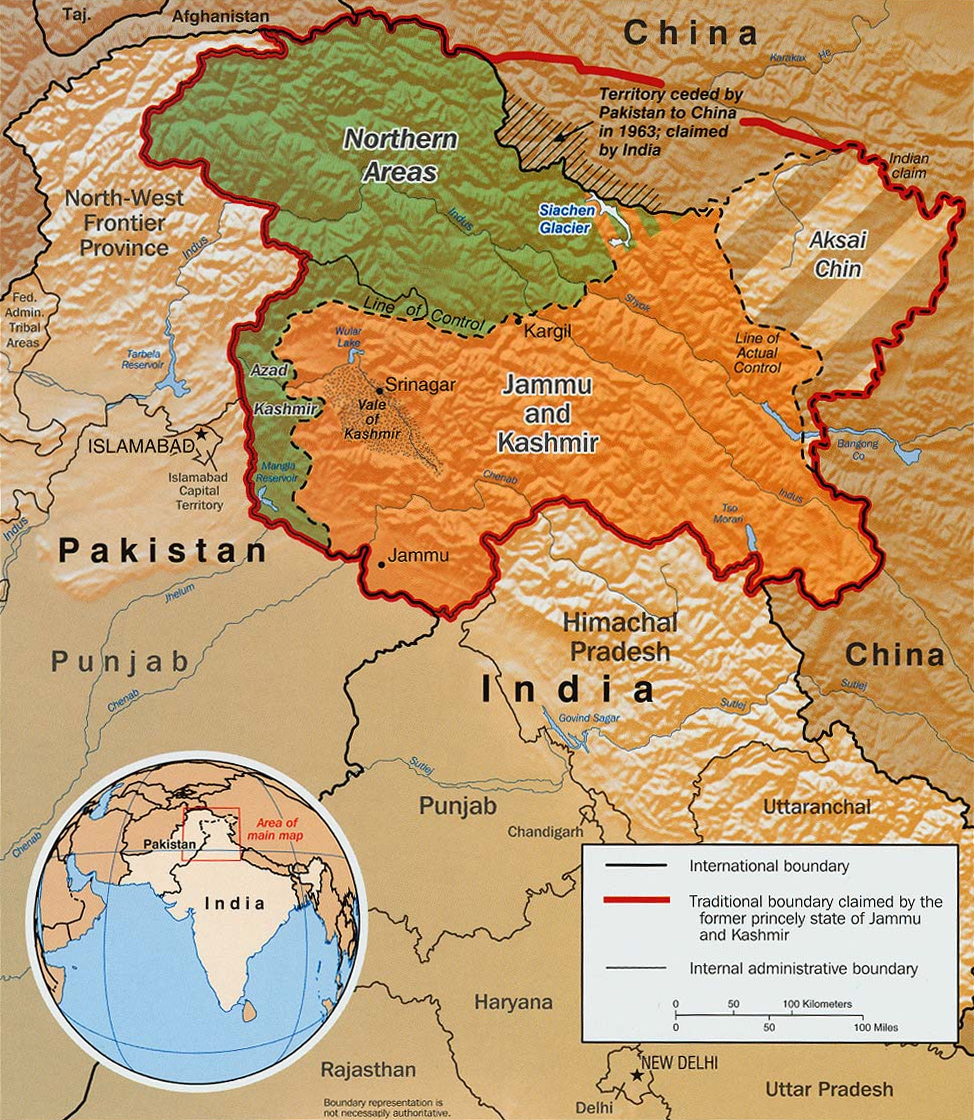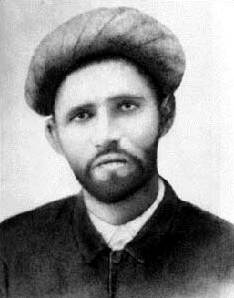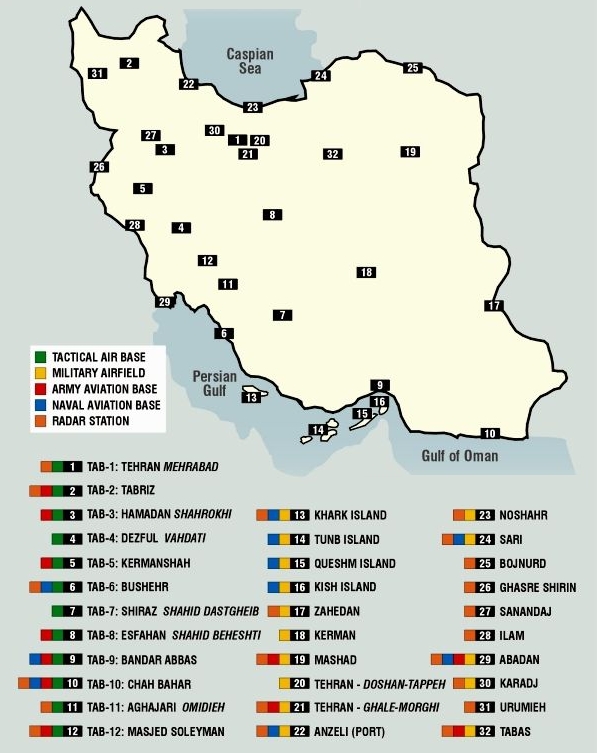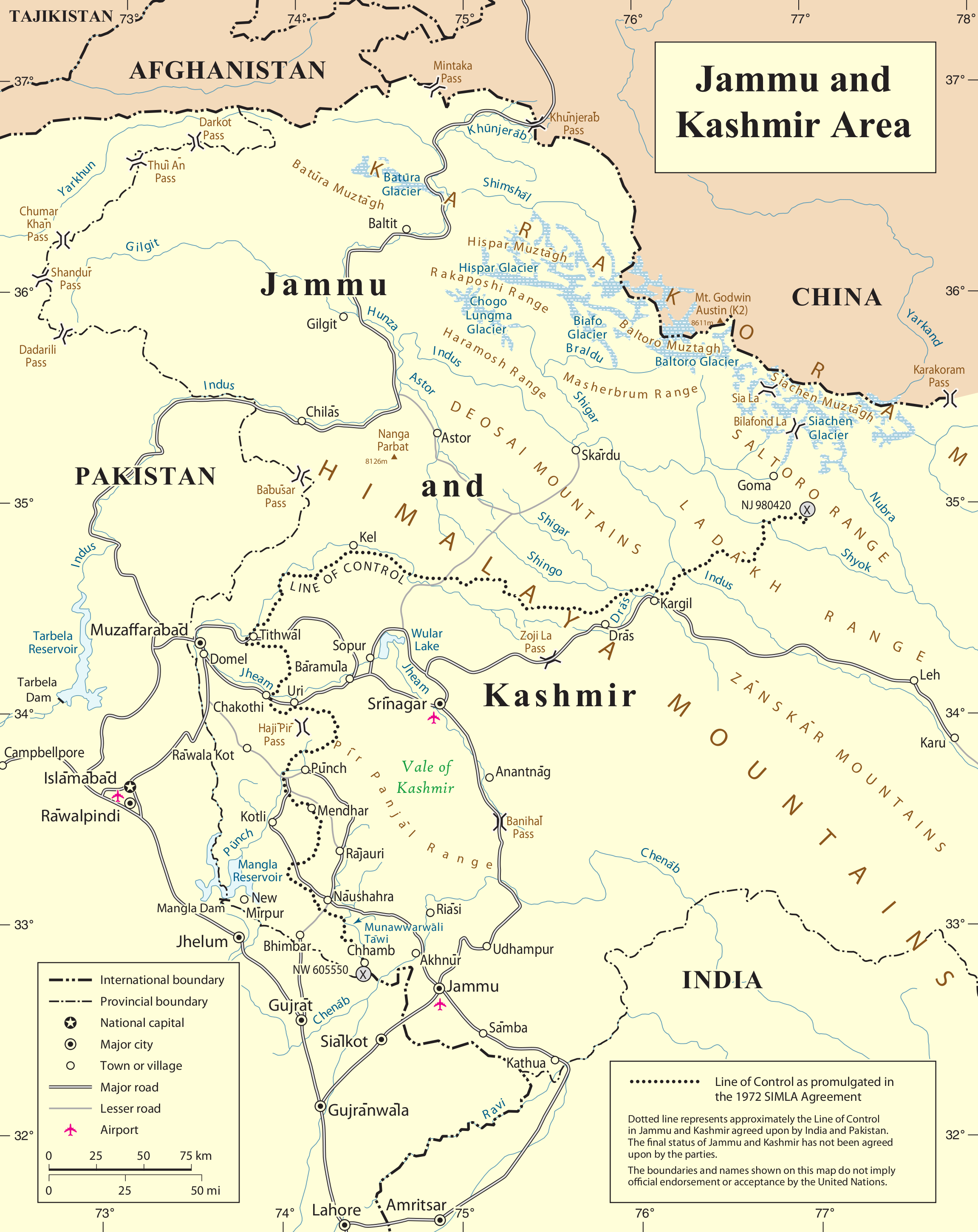|
Bana Singh
Captain Bana Singh (born 6 January 1949) is an Indian soldier and a recipient of the nation's highest gallantry award, the Param Vir Chakra. As a Naib Subedar in the Indian Army, he led the team that wrested control of the highest peak on the Siachen Glacier in Kashmir from Pakistani forces as part of Operation Rajiv. Following his success, India renamed the peak (previously designated as '' Quaid Post'' by the Pakistanis) to ''Bana Post'' in his honour. Early life Singh was born in a Sikh family in Kadyal, Jammu, Jammu and Kashmir on 6 January 1949. His father was a farmer and his uncles were soldiers in the Indian Army. He enlisted in the Indian Army on 6 January 1969,and began service with the 8th Battalion of the Jammu and Kashmir Light Infantry. He was trained at the High Altitude Warfare School in Gulmarg and at another school at Sonamarg. He was promoted to the rank of Naib Subedar from Havildar on 16 October 1985, less than two years before he would l ... [...More Info...] [...Related Items...] OR: [Wikipedia] [Google] [Baidu] |
Pakistan Army
The Pakistan Army (, ), commonly known as the Pak Army (), is the Land warfare, land service branch and the largest component of the Pakistan Armed Forces. The president of Pakistan is the Commander-in-chief, supreme commander of the army. The Chief of the Army Staff (Pakistan), Chief of Army Staff (COAS), typically a four-star general, commands the army. The Army was established in August 1947 after the Partition of India. According to statistics provided by the International Institute for Strategic Studies (IISS) in 2024, the Pakistan Army has approximately 560,000 active duty personnel, supported by the Pakistan Army Reserve, the National Guard (Pakistan), National Guard and the Civil Armed Forces. In accordance with the Constitution of Pakistan, Pakistan Constitution, Pakistani citizens can voluntarily enlist in military service as early as age 16, but cannot be deployed for combat until age 18. The primary objective and constitutional mission of the Pakistan Army is to ens ... [...More Info...] [...Related Items...] OR: [Wikipedia] [Google] [Baidu] |
Glacier
A glacier (; or ) is a persistent body of dense ice, a form of rock, that is constantly moving downhill under its own weight. A glacier forms where the accumulation of snow exceeds its ablation over many years, often centuries. It acquires distinguishing features, such as crevasses and seracs, as it slowly flows and deforms under stresses induced by its weight. As it moves, it abrades rock and debris from its substrate to create landforms such as cirques, moraines, or fjords. Although a glacier may flow into a body of water, it forms only on land“Glacier, N., Pronunciation.” Oxford English Dictionary, Oxford UP, June 2024, https://doi.org/10.1093/OED/7553486115. Accessed 25 Jan. 2025. and is distinct from the much thinner sea ice and lake ice that form on the surface of bodies of water. On Earth, 99% of glacial ice is contained within vast ice sheets (also known as "continental glaciers") in the polar regions, but glaciers may be found in mountain ranges on ever ... [...More Info...] [...Related Items...] OR: [Wikipedia] [Google] [Baidu] |
Saltoro Mountains
The Saltoro Mountains form a subrange within the Karakoram Range and are situated in the southeastern part of the Karakoram. They lie on the southwest side of the Siachen Glacier, which is one of the two longest glaciers in the world outside the polar regions. The name "Saltoro" is also associated with the Saltoro Valley, located west of this range and descending on the Pakistani side of the Saltoro Range, which generally follows the Actual Ground Position Line (AGPL). The Saltoro Range, of which western slopes are held by Pakistan and higher peaks and passes are held by India all of which remain snowbound throughout the year, provides access to Siachen Glacier to its east through five passes, i.e., listed from south to north are Chulung La (5,800m), Yarma La (6,100m), Gyong La (5,640m), Bilafond La (6,160m) - also called Saltoro La, and Sia La (7,300m).Ghazanfar Ali and Hassan Akhtar Ghani, Siachen-The world's highest battlefield; Military Technology; Bonn Vol. 22, Iss. 3, ... [...More Info...] [...Related Items...] OR: [Wikipedia] [Google] [Baidu] |
Quaid-e-Azam
Muhammad Ali Jinnah (born Mahomedali Jinnahbhai; 25 December 187611 September 1948) was a barrister, politician, and the founder of Pakistan. Jinnah served as the leader of the All-India Muslim League from 1913 until the inception of Pakistan on 14 August 1947 and then as Pakistan's first governor-general until his death. Born at Wazir Mansion in Karachi, Jinnah was trained as a barrister at Lincoln's Inn in London, England. Upon his return to India, he enrolled at the Bombay High Court, and took an interest in national politics, which eventually replaced his legal practice. Jinnah rose to prominence in the Indian National Congress in the first two decades of the 20th century. In these early years of his political career, Jinnah advocated Hindu–Muslim unity, helping to shape the 1916 Lucknow Pact between the Congress and the All-India Muslim League, in which Jinnah had also become prominent. Jinnah became a key leader in the All-India Home Rule League, and proposed ... [...More Info...] [...Related Items...] OR: [Wikipedia] [Google] [Baidu] |
Military Base
A military base is a facility directly owned and operated by or for the military or one of its branches that shelters military equipment and personnel, and facilitates training and operations. A military base always provides accommodations for one or more units, but it may also be used as a command center, training ground or proving ground. In most cases, military bases rely on outside help to operate. However, certain complex bases are able to endure on their own for long periods because they are able to provide food, drinking water, and other necessities for their inhabitants while under siege. Bases for military aviation are called air bases. Bases for military ships are called naval bases. Jurisdictional definition Military bases within the United States are considered federal property and are subject to federal law. Civilians (such as family members of military officers) living on military bases are generally subject to the civil and criminal laws of the stat ... [...More Info...] [...Related Items...] OR: [Wikipedia] [Google] [Baidu] |
Siachen
The Siachen Glacier is a glacier located in the eastern Karakoram range of the Himalayas, just northeast of the point NJ9842 where the Line of Control between India and Pakistan ends in northeastern Kashmir. At long, it is the longest glacier in the Karakoram and second-longest in the world's non-polar areas. It falls from an altitude of 5,753 m (18,875 ft) above sea level at its head at Indira Col on the India–China border down to 3,620 m (11,875 ft) at its terminus. The entire Siachen Glacier, with all major passes, has been under the administration of India as part of the union territory of Ladakh since 1984. Pakistan maintains a territorial claim over the Siachen Glacier and controls the region west of Saltoro Ridge, lying west of the glacier, with Pakistani posts located 1 km below more than 100 Indian posts on the ridge. The Siachen Glacier lies immediately south of the great drainage divide that separates the Eurasian Plate from the Ind ... [...More Info...] [...Related Items...] OR: [Wikipedia] [Google] [Baidu] |
Havildar
Havildar or havaldar ( Hindustani: or (Devanagari), (Perso-Arabic)) is a rank in the Indian and Pakistani armies, equivalent to sergeant. It is not used in cavalry and armoured units, where the equivalent is daffadar. Like a British sergeant, a havildar wears three rank chevrons. History "Havildar" is a Persian word in origin and means "person in charge", or more loosely "chief", from the Arabic ("charge", "responsibility") and the Persian (dâr, "holder"). Historically, a havildar was a senior commander, being in charge of a fort during the times of the Mughal Empire. It was used as the equivalent of a sergeant in the British Indian Army, which has led to its current usage. Appointments Indian Army Havildars could be further appointed to positions of higher authority. The appointments of company quartermaster havildar and company havildar major existed in the British Indian Army. Historically, the two senior-most havildars of a company became the CQMH and the CHM. How ... [...More Info...] [...Related Items...] OR: [Wikipedia] [Google] [Baidu] |
Naib Subedar
Nawab is a royal title indicating a ruler, often of a South Asian state, in many ways comparable to the Western title of Prince. The relationship of a Nawab to the Emperor of India has been compared to that of the Kings of Saxony to the German Emperor. In earlier times the title was ratified and bestowed by the reigning Mughal emperor to semi-autonomous Muslim rulers of subdivisions or princely states in the Indian subcontinent loyal to the Mughal Empire, for example the Nawabs of Bengal. "Nawab" usually refers to males and literally means ''Viceroy''; the female equivalent is "Begum" or "''Nawab Begum''". The primary duty of a Nawab was to uphold the sovereignty of the Mughal emperor along with the administration of a certain province. The title of "nawabi" was also awarded as a personal distinction by the paramount power, similar to a British peerage, to persons and families who ruled a princely state for various services to the Government of India. In some cases, the t ... [...More Info...] [...Related Items...] OR: [Wikipedia] [Google] [Baidu] |
Sonamarg
Sonamarg or Sonmarg (), known as Sonamarag (; ) in Kashmiri, is a hill station located in the Ganderbal District of Jammu and Kashmir, India. It is located about 62 kilometers from Ganderbal Town and northeast of the capital city, Srinagar. History Sonamarg had historical significance as a gateway on the ancient Silk Road, connecting Kashmir with Tibet. Today, the hill station is a popular tourist destination amongst fishers and hikers, and following the Kargil War with neighbouring Pakistan in 1999, it serves as a strategically important point for the Indian Army. On 25 May 2024, a section of a glacier near Thajiwas Glacier collapsed, leading to two tourists falling into a snow cavity created by the break, killing one. On 2 June 2024, a section of Thajiwas Glacier collapsed, trapping three tourists who were rescued, and killing one laborer. Geography The hill station is situated in the Kashmir Valley, at an altitude of Combined with the alpine meadows that bloom ... [...More Info...] [...Related Items...] OR: [Wikipedia] [Google] [Baidu] |
Gulmarg
Gulmarg (), known as Gulmarag (; in Kashmiri language, Kashmiri), is a town, hill station, tourist destination, skiing destination, and a notified area committee in the Baramulla district of the northern Kashmir Valley of the Indian union territory of Jammu and Kashmir (union territory), Jammu and Kashmir, within the larger disputed Kashmir region. It is located at a distance of from Baramulla and from Srinagar. The town is situated in the India’s well known Pir Panjal Range in the Western Himalayas and lies within the boundaries of Gulmarg Wildlife Sanctuary. Etymology Kashmir has many summer retreats suffixed with the word ''-marg'': Sonamarg, Tangmarg, Gulmarg, Khilanmarg, Yousmarg, and Nagmarg. Gulmarg is one of the Margs that has historical importance for Kashmiris. Gulmarg is a compound word or portmanteau of two Persian words, ''Gul'' and ''Marg''. ''Gul'' means flowers and ''Marg'' means meadow. History Yousuf Shah Chak, who ruled Kashmir from 1579 to 1586, fre ... [...More Info...] [...Related Items...] OR: [Wikipedia] [Google] [Baidu] |
High Altitude Warfare School
The High Altitude Warfare School (HAWS) is a defence service training and research establishment of the Indian Army. In 1948, the Indian Army established a ski school in Gulmarg that later became the High Altitude Warfare School, which specialises in snow–craft and winter warfare. It is located in an area which is prone to avalanches. Selected soldiers from the US, UK, Germany and other countries visit regularly for specialist training. History The birth of High Altitude Warfare School (HAWS) of Indian Army in 1948 can be directly attributed to the loss of Gilgit-Baltistan in the Siege of Skardu to Pakistan in 1947–1948 Indo-Pakistani War. The school was established in December 1948 by General K S Thimayya, then holding the rank of Brigadier. It was initially known as the ''19 Infantry Division Ski School''. During the winter of 1949–1950, the school was redesignated as a Command Establishment and renamed as the ''Winter Warfare School''. On 8 April 1962, it was upgrad ... [...More Info...] [...Related Items...] OR: [Wikipedia] [Google] [Baidu] |





